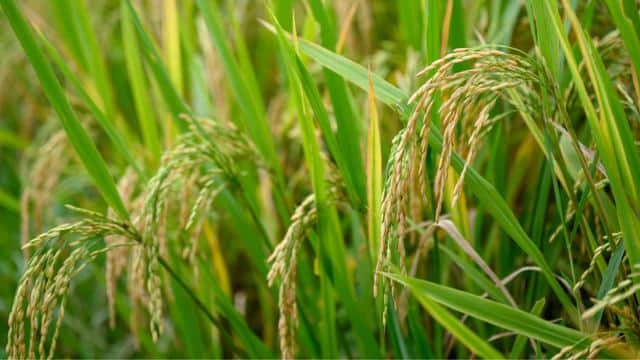Tags
China discovers game-changing hybrid rice gene to boost production by 38%
Scientists find gene that could transform global agriculture with 96% purity in mechanized hybrid rice seed separation.

Representative image of hybrid rice crop.
Chinese scientists have identified a crucial gene that could revolutionize the production of hybrid rice seeds.
Traditionally, hybrid rice production involves meticulous manual labor to separate hybrid seeds from restorer seeds, a process that consumes time and resources.
Addressing this challenge, researchers from the Chinese Academy of Science, Hainan Seed Industry Laboratory, and China National Rice Research Institute have introduced a gene that facilitates the mechanized separation of hybrid rice seeds.
“Hybrid rice has achieved high grain yield and greatly contributes to food security, but the manual-labor-intensive hybrid seed production process limits fully mechanised hybrid rice breeding,” the team emphasized in their recent study.
This discovery promises to streamline current labor-intensive methods and significantly enhance breeding efforts.
The role of the GSE3 gene in hybrid rice development
The critical factor to this breakthrough is the discovery of the GSE3 gene, which allows scientists to create rice varieties with both smaller and larger grains. This genetic modification simplifies the process of mechanically separating hybrid seeds from the rest of the harvest using basic sieving techniques.
The team conducted field trials demonstrating that rice lines equipped with the GSE3 gene did not compromise hybrid seed numbers; in fact, they observed a notable increase of 21 to 38 percent.
This finding underscores the potential of GSE3 in enhancing the efficiency and productivity of hybrid rice production.
Advancements in hybrid rice technology
China, a leader in growing hybrid rice, has gained significantly higher yields from using hybridization. Over the past decades, hybrid rice has boosted rice yields by 20 to 30 percent, enhancing global food security efforts.
“The restorer line needs to be grown near the male sterile line in separate rows to provide enough pollen for hybridization. To avoid seed contamination, manual labour is used to remove the restorer line before harvesting hybrid seeds,” the researchers explained, highlighting the current inefficiencies in seed production.
Mechanized seed separation and future applications
The breakthrough involves crossing the Tianyouhuazhan (TYHZ) “super-hybrid rice” with the Xiaoligeng variety to create a male sterile line (XQA) with smaller grain size, facilitated by the GSE3 gene. This line is then paired with a large grain-size restorer line (DHZ), enabling the mechanical separation of hybrid seeds from larger restorer seeds.
After thorough testing, the team achieved 96 percent purity for hybrid seeds using a basic sieve, meeting commercial requirements.
This method offers a viable alternative to traditional manual separation techniques, which typically achieve 96 to 98 percent purity.
Gene editing for future agricultural innovations
Furthermore, the researchers employed CRISPR-Cas9 gene-editing technology to streamline the integration of GSE3 into rice lines, overcoming conventional breeding challenges. This method speeds up breeding and could extend the use of GSE3 to other crops, revolutionizing hybrid seed production in agriculture.
“This research is a significant step towards fully mechanized hybrid rice breeding,” the team concluded, emphasizing the transformative impact of their findings on global agricultural practices.
The research was published in the journal Nature Plants.
https://interestingengineering.com/science/china-gene-hybrid-rice-seedPublished Date: June 13, 2024






